Introduction
What To Feed A Baby Rabbit: Welcome to the world of caring for baby rabbits, where their delicate and adorable presence requires thoughtful attention, particularly when it comes to their diet. As these young and vulnerable creatures embark on their journey of growth, knowing what to feed them becomes paramount to ensuring their health and well-being. Just like any young animal, baby rabbits have specific nutritional needs that must be met to promote proper development and longevity.
Whether you’re a new rabbit owner or an experienced caregiver, understanding the nuances of their dietary requirements is essential for creating a nurturing environment that allows these tiny companions to flourish. In this guide, we’ll delve into the essential aspects of feeding baby rabbits, offering insights into appropriate foods, feeding schedules, and valuable tips that will aid you in providing the best nourishment for your furry friends.
Remember, each rabbit is unique, and their dietary needs can vary. It’s essential to closely observe your baby rabbits, consult reputable sources, and seek advice from experienced rabbit owners or veterinarians to provide the best care possible. Proper nutrition during their early stages of life will contribute significantly to their long-term health and happiness.
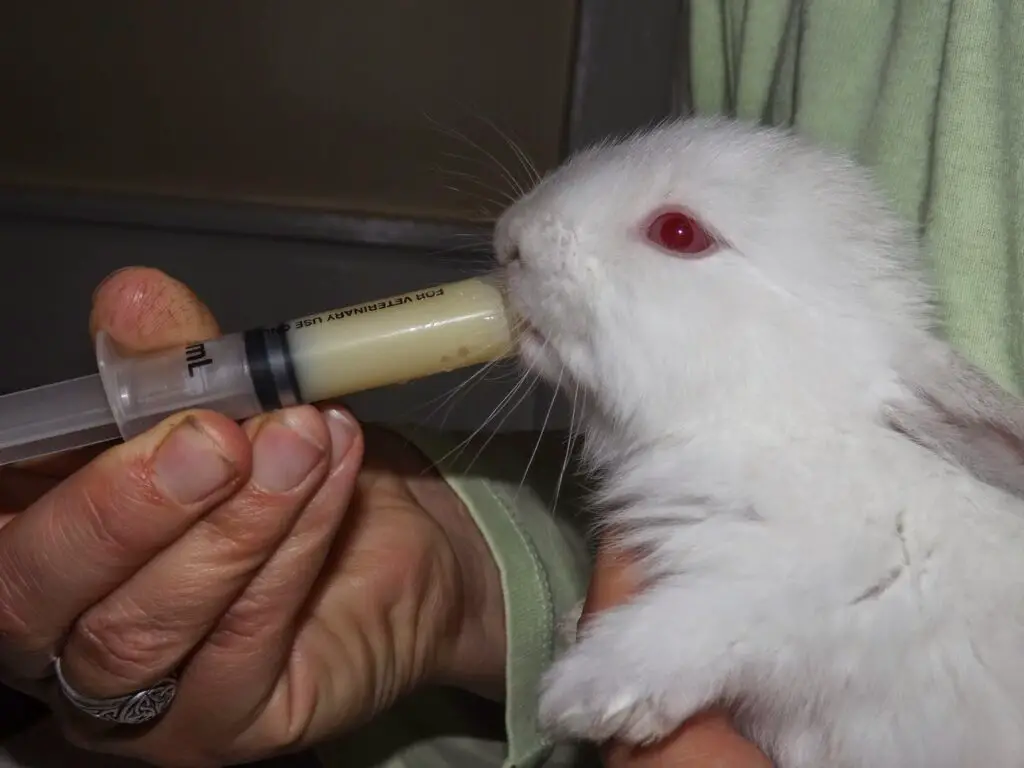
Is milk good for baby rabbits?
Can rabbits drink milk? You should not give rabbits milk to drink. Adult rabbits are lactose intolerant and milk products are bad for the rabbit’s digestive system. Baby rabbits should also not have cow’s milk because it is very different from the milk they get from their mothers.
Why Milk Isn’t Ideal for Baby Rabbits
Contrary to popular belief, milk is not a suitable source of nutrition for baby rabbits. In fact, feeding cow’s milk or any dairy-based products to young rabbits can lead to digestive issues, bloating, and even life-threatening conditions. There are several reasons why milk is unsuitable for these small mammals:
Lactose Intolerance: Like many other mammals, rabbits are lactose intolerant. They lack the enzymes needed to properly digest lactose, the sugar found in milk. Feeding milk to baby rabbits can cause severe digestive disturbances, leading to bloating, diarrhea, and discomfort.
Imbalanced Nutrition: Mother rabbit’s milk is specifically designed to provide the necessary nutrients for the growth and development of kits. Cow’s milk lacks the precise balance of nutrients required for rabbit kits, including essential proteins and vitamins.
Gut Microbiome Disruption: Feeding inappropriate foods like milk to rabbits can disrupt their delicate gut microbiome, potentially leading to a cascade of health issues. A healthy gut is crucial for proper digestion and overall well-being.
What to Feed Baby Rabbits
The ideal diet for baby rabbits revolves around replicating their natural nutrition as closely as possible. Here’s what you should feed them:
Mother’s Milk: If you’re raising orphaned kits, the best substitute for mother’s milk is a specialized rabbit milk replacer. These products are formulated to meet the specific nutritional needs of baby rabbits.
Hay: High-quality hay is the cornerstone of a rabbit’s diet, providing essential fiber for healthy digestion and dental health. Alfalfa hay can be introduced to kits for the first few weeks due to its higher protein content.
Pellets: Specially formulated rabbit pellets can be introduced gradually as kits grow. Look for pellets that are specifically designed for young rabbits, as they contain the necessary nutrients in the right proportions.
Fresh Greens: As kits mature, you can gradually introduce a variety of fresh, leafy greens like lettuce, parsley, and cilantro. These should be introduced slowly to avoid digestive upsets.
Water: Fresh and clean water should always be available for kits. Use a shallow dish that they can easily access.
How do you take care of a baby rabbit?
It is best to keep the babies in a warm, quiet place in a nest. Bunny fur is the best lining for the nest, but clean cotton wadding will do as a substitute. Just be sure the babies do not get tangled in it. For heating, two or more babies usually are able to snuggle and keep each other warm if they have a good nest.
Provide a Suitable Nesting Space
Baby rabbits are born blind, hairless, and completely dependent on their mother for warmth and nourishment. Create a secure and comfortable nesting area using soft bedding material such as hay or straw. This space should be warm, quiet, and away from disturbances to mimic the natural environment.
Ensure Proper Nutrition
For the first few weeks of their lives, kits rely solely on their mother’s milk for nutrition. If you are raising orphaned kits, it’s crucial to use a specialized rabbit milk replacer that mimics the mother’s milk. Consult a veterinarian for guidance on proper feeding schedules and quantities. As they grow, gradually introduce high-quality rabbit pellets, fresh greens, and access to clean water.
Maintain Hygiene
Keep the nesting area clean and dry to prevent the spread of infections. Replace soiled bedding regularly, and ensure that the kits are not in direct contact with their waste. Washing your hands before handling the kits can also help minimize the risk of transferring germs.
Temperature Regulation
Baby rabbits are extremely sensitive to temperature changes. If the mother is not present or unable to provide sufficient warmth, use a heating pad set to low underneath a part of the nesting area. Ensure that the kits can move away from the heat source if they become too warm.
Monitor Their Health
Regularly observe the kits for any signs of distress, illness, or abnormal behavior. Common signs of trouble include lethargy, refusal to eat, runny nose, diarrhea, and bloating. If you notice any of these symptoms, consult a veterinarian experienced in rabbit care immediately.
How do you take care of a baby rabbit without a mother?
Keep the baby rabbit in a dark, quiet place indoors, in an enclosed or covered container. For most species, a cardboard box is perfect. If your home is small, a closet or a bathroom is an excellent spot. A basement, heated garage, or spare bedroom will also work.
Create a Warm and Safe Environment
Newborn kits are particularly vulnerable to temperature changes. To mimic the warmth they would receive from their mother, provide a warm and secure nesting area. You can use a box or container with soft bedding material like hay or shredded paper. Place a heating pad set on low beneath a portion of the nesting area, allowing the kits to move to warmer or cooler spots as needed.
Feeding Orphaned Kits
Without a mother’s milk, it’s crucial to provide kits with an appropriate milk substitute. Rabbit-specific milk replacers are available and are formulated to meet the nutritional needs of growing kits. Consult a veterinarian to determine the correct type of milk replacer and feeding schedule based on the kits’ age and condition.
Feeding Schedule
Newborn kits need to be fed every 2-3 hours, including during the night. As they grow, you can gradually extend the time between feedings. A veterinarian or an experienced rabbit rehabilitator can guide you through adjusting the feeding schedule.
Proper Feeding Technique
Feeding baby rabbits requires precision and care. Use a small syringe or a kitten nursing bottle with a soft nipple to avoid choking hazards. Feed the kits slowly and gently, ensuring that they’re swallowing properly. Overfeeding can lead to digestive issues, so it’s important to follow a vet’s recommendations on the right amount to feed.
Stimulation for Elimination
Mother rabbits typically stimulate their kits’ elimination by licking their genital area. To replicate this process, use a warm, damp cotton ball or cloth to gently stroke the kits’ genital area after each feeding. This helps stimulate urination and bowel movements.
Transition to Solid Food
Around the age of 2-3 weeks, you can begin introducing solid foods gradually. Start with high-quality hay, and later, introduce rabbit pellets and fresh greens. The transition to solid food is essential for the kits’ growth and development.
Socialization and Handling
While handling should be minimal in the first few weeks, gradual socialization is important to prevent the kits from becoming too fearful of humans. Keep interactions gentle and brief, allowing the kits to become accustomed to human presence.
Do baby bunnies drink water?
Young Rabbits (up to 8wks old) drink milk from their mothers. They may also start drinking water from their mom’s water bottle or bowl at about 3 to 4 weeks of age.
Water Consumption in Baby Bunnies
Unlike many mammals, baby bunnies do not typically drink water in their early days of life. During their first few weeks, kits primarily rely on their mother’s milk for both nutrition and hydration. Mother rabbit’s milk is composed of a high water content, providing kits with the necessary fluids they need to stay hydrated.
Mother’s Milk: A Source of Hydration
Mother rabbits nurse their kits, ensuring they receive the appropriate amount of fluids needed to maintain their hydration levels. The milk produced by the mother rabbit not only supplies essential nutrients but also serves as the kits’ primary source of hydration during their initial stages of life.
Transitioning to Water
As baby bunnies grow and start to nibble on solid foods, their hydration needs gradually change. Around the age of three weeks, kits begin to transition to consuming solid foods, including hay, rabbit pellets, and fresh greens. Along with this transition comes the introduction of water.
Introducing Water
Between three to four weeks of age, you can begin offering a shallow dish of clean, fresh water to the kits. It’s important to note that the water dish should be shallow to prevent the kits from accidentally falling in and getting wet, which can lead to chilling. Additionally, make sure the water is easily accessible and positioned in a secure area within their living space.
What can baby rabbits drink?
Baby rabbits should be fed Kitten Milk Replacer (KMR) or goat milk, which you can buy at pet stores, or sometimes even a local veterinarian’s office. Because rabbit milk is the most caloric of all mammals, we add in one tablespoon of 100% heavy whipping cream (no sugar) to each can of KMR.
Mother’s Milk: The Primary Source
During their first few weeks of life, baby rabbits primarily rely on their mother’s milk for both nutrition and hydration. Mother rabbits produce milk that contains the essential nutrients and fluids necessary for the kits’ early growth. The milk is designed to meet all their hydration needs, ensuring they remain properly nourished and hydrated.
Transition to Water
As baby rabbits mature and start to explore solid foods, their hydration needs gradually shift. Between three to four weeks of age, it’s appropriate to begin introducing them to clean and fresh water. Water becomes increasingly important as they transition to a more diverse diet.
Suitable Water Sources
When it comes to offering water to baby rabbits, consider the following suitable options:
Fresh Water: Clean and fresh water is the best choice for baby rabbits. Make sure to provide water that is free from contaminants and change it regularly to maintain its quality.
Shallow Dishes: Use shallow dishes to offer water to baby rabbits. This prevents them from accidentally falling into the water and getting wet, which could lead to chilling.
Bottle or Nipple Feeders: Some rabbit caregivers prefer to use specialized small animal bottles or nipple feeders to provide water to baby rabbits. These options can be helpful in preventing spills and keeping the water clean.
Avoid Milk: While baby rabbits drink their mother’s milk, it’s important to note that cow’s milk or dairy-based products are not suitable for them. Baby rabbits are lactose intolerant and cannot properly digest lactose, which can lead to digestive issues.
Hydration through Food
In addition to drinking water, baby rabbits also receive hydration through the foods they consume. High-quality hay, fresh greens, and rabbit-specific pellets have moisture content that contributes to their hydration. As baby rabbits transition to solid foods, these dietary elements become increasingly important sources of water.
Monitoring Hydration
As you introduce water to baby rabbits, it’s essential to monitor their hydration levels. Observe their behavior and the amount of water they consume. If you notice any signs of dehydration, such as lethargy, dry mouth, or reduced urine output, it’s crucial to consult a veterinarian for guidance.
What kind of milk can baby rabbits drink?
Rabbit milk is the most caloric of all mammals’ milk, so you’ll need to make sure you get the proper replacement and amounts. Buy Kitten Milk Replacer (KMR) or goat milk to feed the babies. You can purchase these at pet stores or sometimes at a local vet’s office.
No Cow’s Milk for Baby Rabbits
It’s important to clarify from the start that cow’s milk or any dairy-based milk is not suitable for baby rabbits. Baby rabbits are lactose intolerant, which means they lack the necessary enzymes to digest lactose, the sugar found in milk. Feeding cow’s milk to baby rabbits can lead to digestive disturbances, bloating, and other health issues.
Specialized Rabbit Milk Replacers
If you are raising orphaned baby rabbits or if the mother rabbit is unable to nurse, specialized rabbit milk replacers are the most appropriate option. These milk replacers are formulated to mimic the nutritional composition of mother rabbit’s milk, providing kits with the essential nutrients they need for healthy growth.
Ingredients of Rabbit Milk Replacers
Rabbit milk replacers are typically made from a blend of ingredients that mirror the composition of mother rabbit’s milk. They often contain a mixture of proteins, fats, vitamins, and minerals that are appropriate for the specific needs of baby rabbits. Some milk replacers are available in powder form and can be mixed with water according to the manufacturer’s instructions.
Consulting a Veterinarian
When considering which rabbit milk replacer to use, it’s important to consult a veterinarian with experience in rabbit care. They can guide you on the appropriate brand, formulation, and feeding schedule based on the age and condition of the kits. It’s also important to note that some veterinary offices or specialized pet stores may carry rabbit milk replacers.
Feeding Technique
Feeding baby rabbits with a milk replacer requires careful attention and technique. Using a small syringe or a kitten nursing bottle with a soft nipple is recommended to ensure that the kits can drink without the risk of choking. Slow and gentle feeding is essential to prevent overfeeding and digestive issues.
Do baby rabbits need sunlight?
Do rabbits need sunlight? Recent research suggests that sunlight, or UV rays, is important for a rabbit’s health. Like in many other animals, sunlight helps the rabbit produce enough vitamin D. Rabbits that don’t get direct sunlight have a greater risk of developing weak bones or dental problems.
Natural Habitat Considerations
In the wild, rabbits are crepuscular, which means they are most active during dawn and dusk. They often seek shelter during the hotter parts of the day to avoid extreme temperatures and potential predators. While they do spend time outdoors, they tend to stay in shaded areas to protect themselves from direct sunlight.
The Importance of Vitamin D
Vitamin D is essential for the health of rabbits, just as it is for many other animals, including humans. Vitamin D helps with the absorption of calcium, which is crucial for bone health. Sunlight exposure allows rabbits to naturally synthesize vitamin D in their skin, promoting the development of strong bones.
Balancing Sunlight and Safety
While vitamin D is important, it’s crucial to balance the benefits of sunlight with the safety of baby rabbits. Direct and prolonged exposure to sunlight, especially in hot weather, can be harmful to their sensitive systems. Baby rabbits can easily become overheated and suffer from heatstroke, dehydration, and even sunburn.
Creating a Suitable Environment
When it comes to baby rabbits, creating a safe and suitable environment is key. Here are some tips for ensuring their well-being:
Shade: If you choose to let your baby rabbits have outdoor time, provide ample shade. Shade protects them from direct sunlight and helps regulate their body temperature.
Limited Exposure: Limit outdoor time during the hottest parts of the day to prevent heat-related issues. Early morning or late afternoon periods are better for short, supervised outdoor sessions.
Indoor Housing: If you’re raising baby rabbits indoors, ensure their living space is well-ventilated, and they have access to indirect natural light. Avoid placing their enclosure in direct sunlight or near windows that receive intense sunlight.
Balanced Diet: A balanced diet that includes high-quality hay, fresh greens, and rabbit pellets contributes to the overall health of baby rabbits. Proper nutrition supports their bone development and overall well-being.
Consulting a Veterinarian
To determine the best approach for providing sunlight to your baby rabbits, consider consulting a veterinarian experienced in rabbit care. They can provide guidance tailored to your rabbits’ specific needs, taking into account factors such as their age, health condition, and the climate you live in.
What does a 2 week old bunny look like?
Two Weeks Old: The fur should be starting to stand up and be less slick against the body. Eyes and ears are wide open. They should weigh 55-70+ grams and be 4″ or longer — he should fit in your palm but not fill your hand. Two and a Half Weeks Old: Cottontails should begin to look “fluffy” at this stage.
Physical Appearance
At two weeks old, baby bunnies have undergone notable transformations since birth. While they are still quite small and delicate, their growth is evident:
Fur Growth: Two-week-old kits begin to develop a fine coat of fur. The fur may still be sparse in some areas, but it becomes more visible and starts to cover their bodies.
Eye Opening: Baby rabbits’ eyes usually start to open around the end of their first week or the beginning of their second week. By the time they are two weeks old, their eyes are typically fully open. The eyes might appear blue or gray at this stage.
Ears: While the ears of baby rabbits are still relatively large in proportion to their bodies, they are more erect and mobile than when they were first born.
Mobility and Behavior
At two weeks old, baby rabbits show increased activity and exploration, though they are still wobbly in their movements:
Limited Mobility: Kits can move around their nesting area more confidently, attempting to explore their surroundings. Their movements are still unsteady and somewhat awkward.
Nest Explorations: Baby rabbits might start to venture out of the nesting area, albeit for short distances. They may hop around, exploring the confines of their space.
Interaction with Siblings: If the litter includes multiple kits, they may start to engage in gentle interactions with each other. These interactions could include snuggling, grooming, or playfully hopping around together.
Dependency on Mother’s Milk
While baby rabbits are growing and becoming more mobile, their main source of nutrition and hydration is still their mother’s milk:
Nursing: Kits continue to nurse from their mother. Mother rabbits nurse their kits multiple times a day, providing essential nutrients for their growth and development.
Supplementary Feeding
If you are caring for orphaned kits, around two weeks of age, they might be introduced to a specialized rabbit milk replacer. Consult with a veterinarian experienced in rabbit care for guidance on appropriate feeding methods and schedules.
Eyesight and Exploration
By two weeks of age, baby rabbits have a clearer view of their environment and are more curious about the world around them:
Curiosity: Kits start to show curiosity about their surroundings and may react to movement or sounds nearby.
Limited Focus: Their eyesight is still developing, so their focus might not be very sharp. However, they can begin to distinguish shapes and objects.
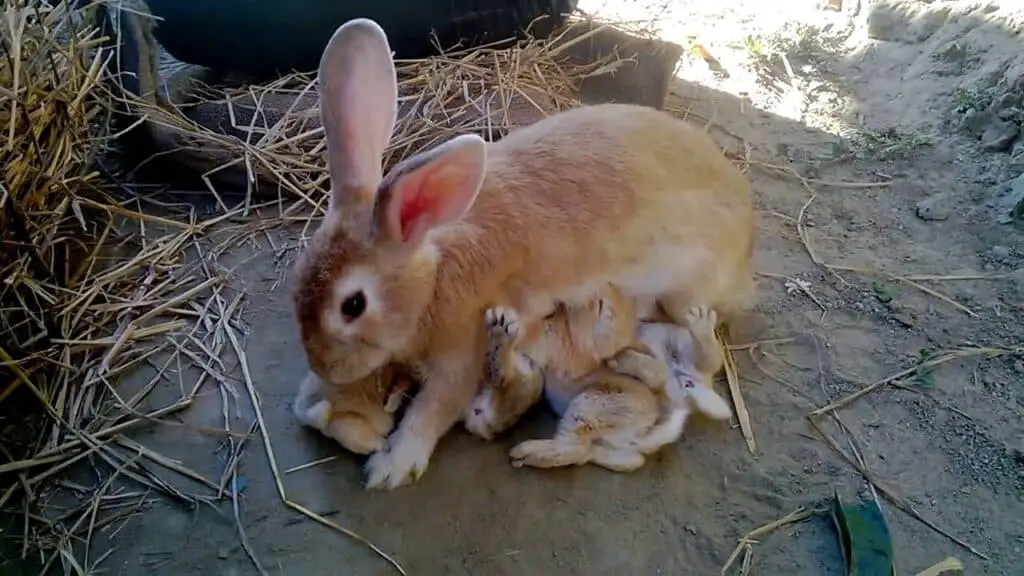
Conclusion
providing proper nourishment for baby rabbits is a vital aspect of their early development and well-being. From their initial days relying on their mother’s milk to the gradual introduction of solid foods, the journey of feeding these delicate creatures demands attention, care, and a deep understanding of their nutritional needs. As these young kits transition from nursing to consuming hay, pellets, and fresh vegetables, they embark on a path towards growth and vitality.
A diverse and balanced diet that includes high quality hay, age-appropriate pellets, and a variety of safe vegetables promotes not only their physical health but also their mental stimulation. By being attentive to their dietary preferences and any potential health concerns, caregivers can ensure that baby rabbits thrive and flourish.
Remember, the road to raising healthy baby rabbits involves patience, research, and continuous observation. As they grow, their dietary requirements evolve, and a seamless transition to an adult diet is essential for their ongoing health. Ultimately, the careful attention given to feeding these tiny companions not only impacts their immediate well-being but also sets the stage for a life filled with vitality, happiness, and companionship.

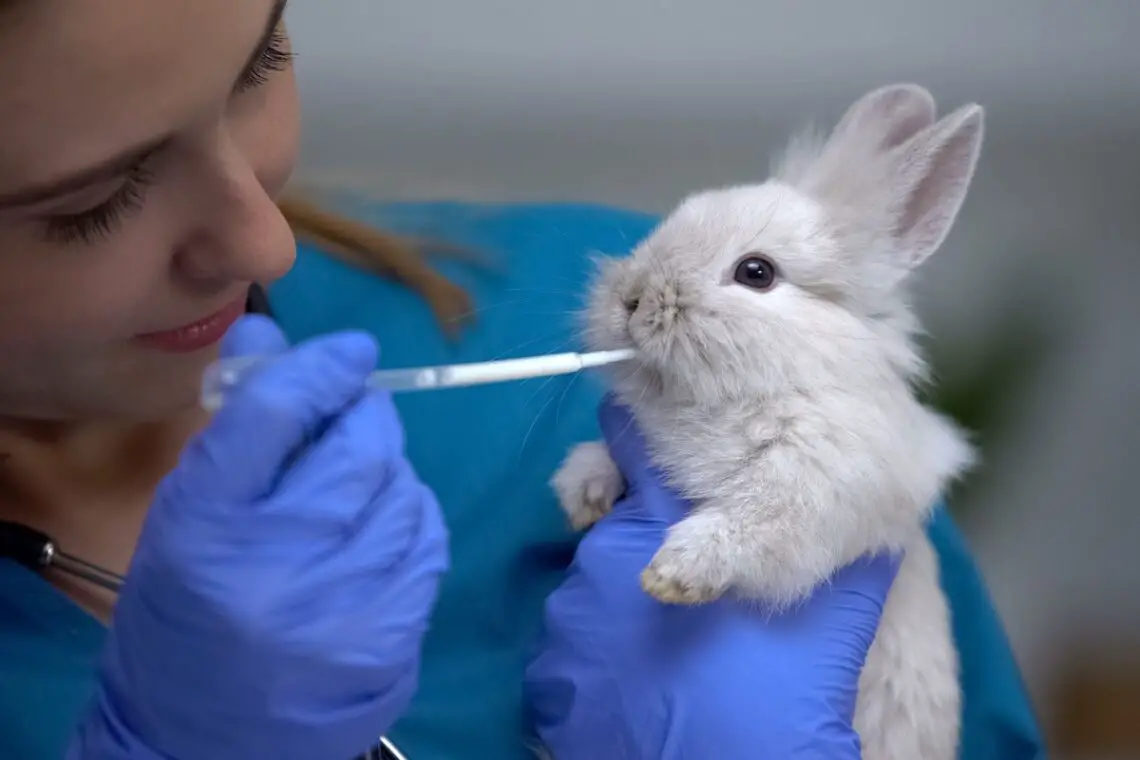
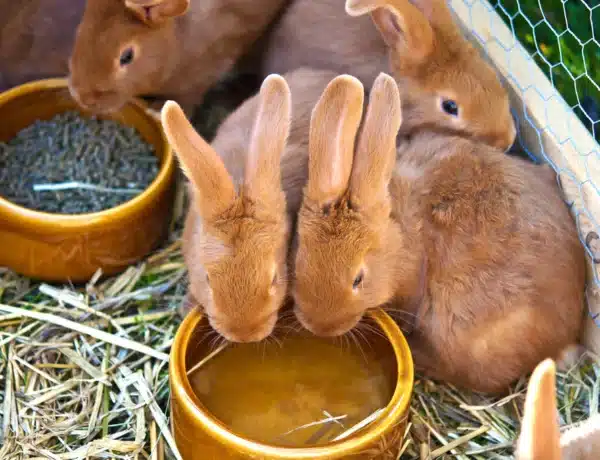

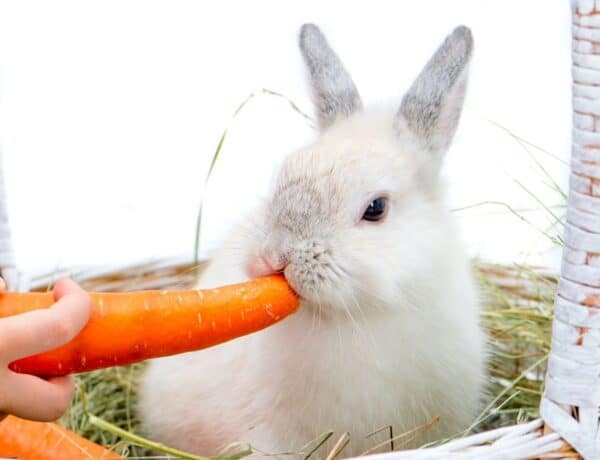
No Comments